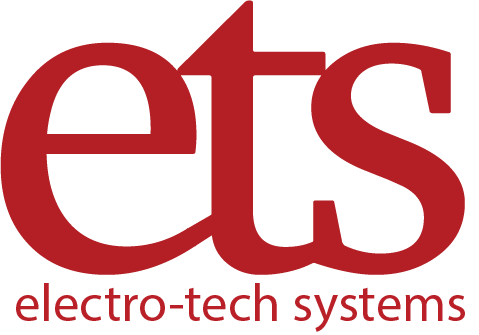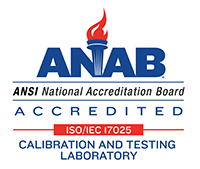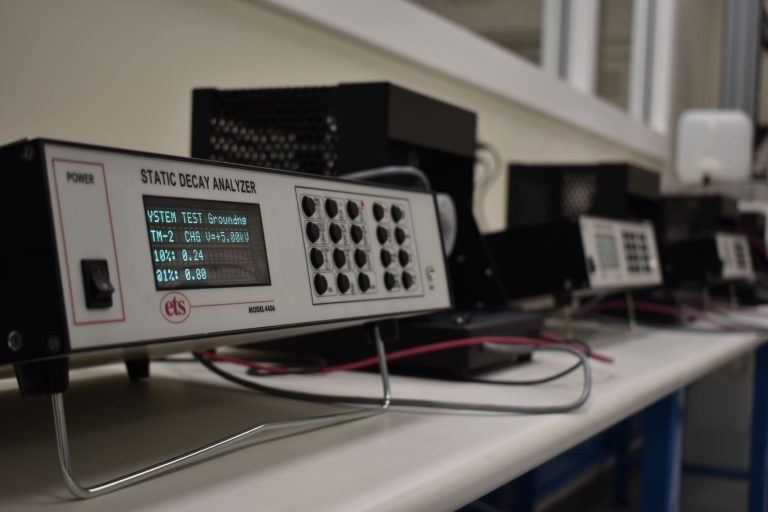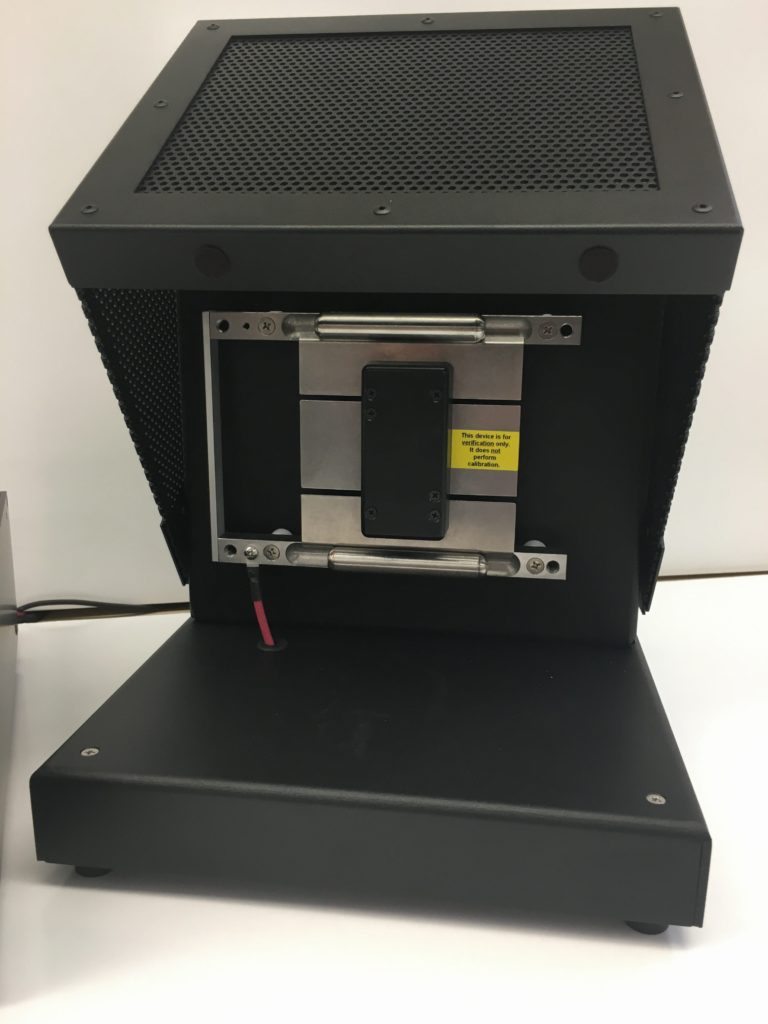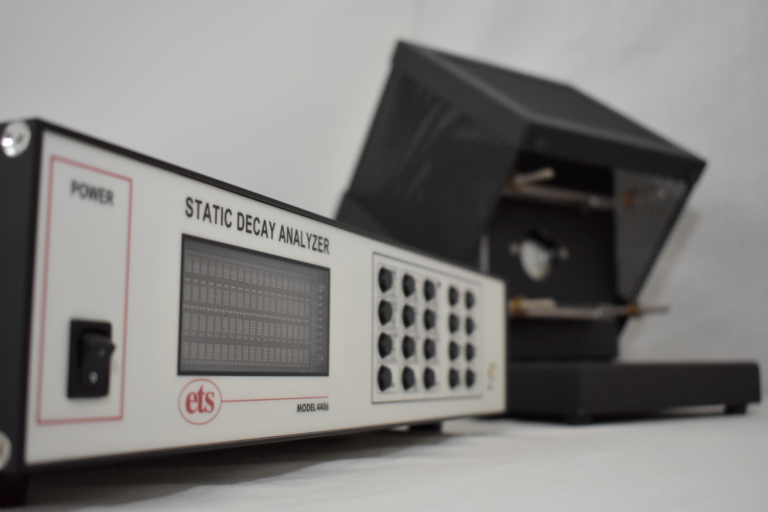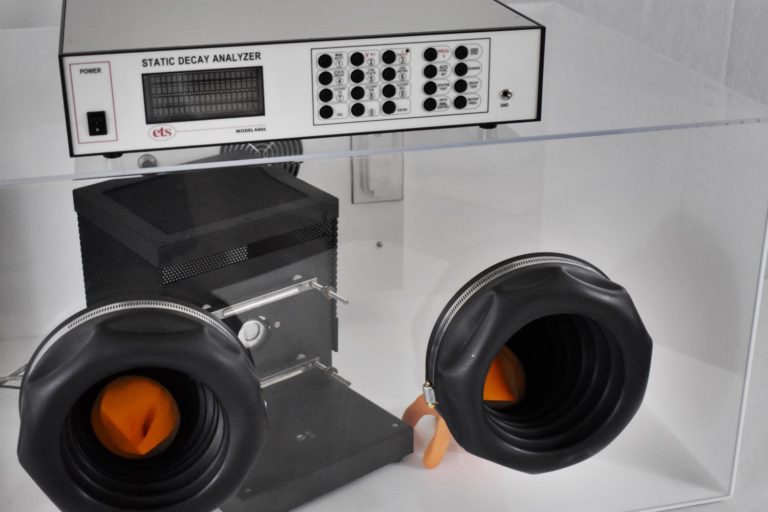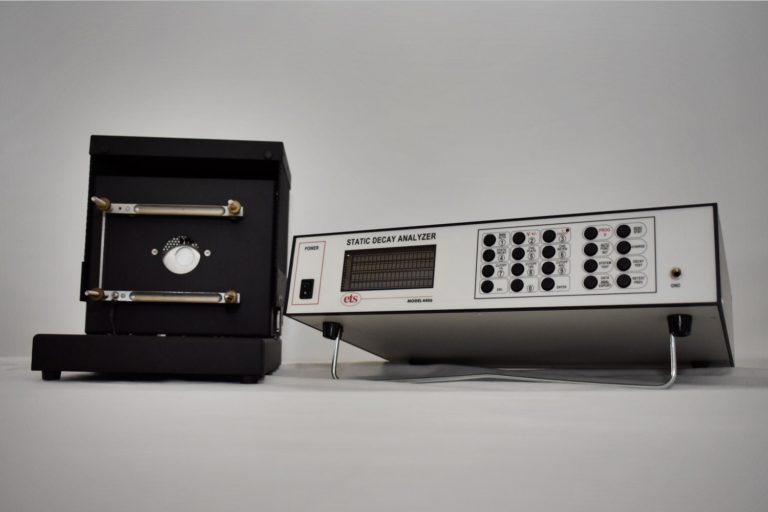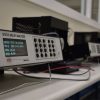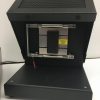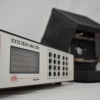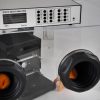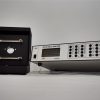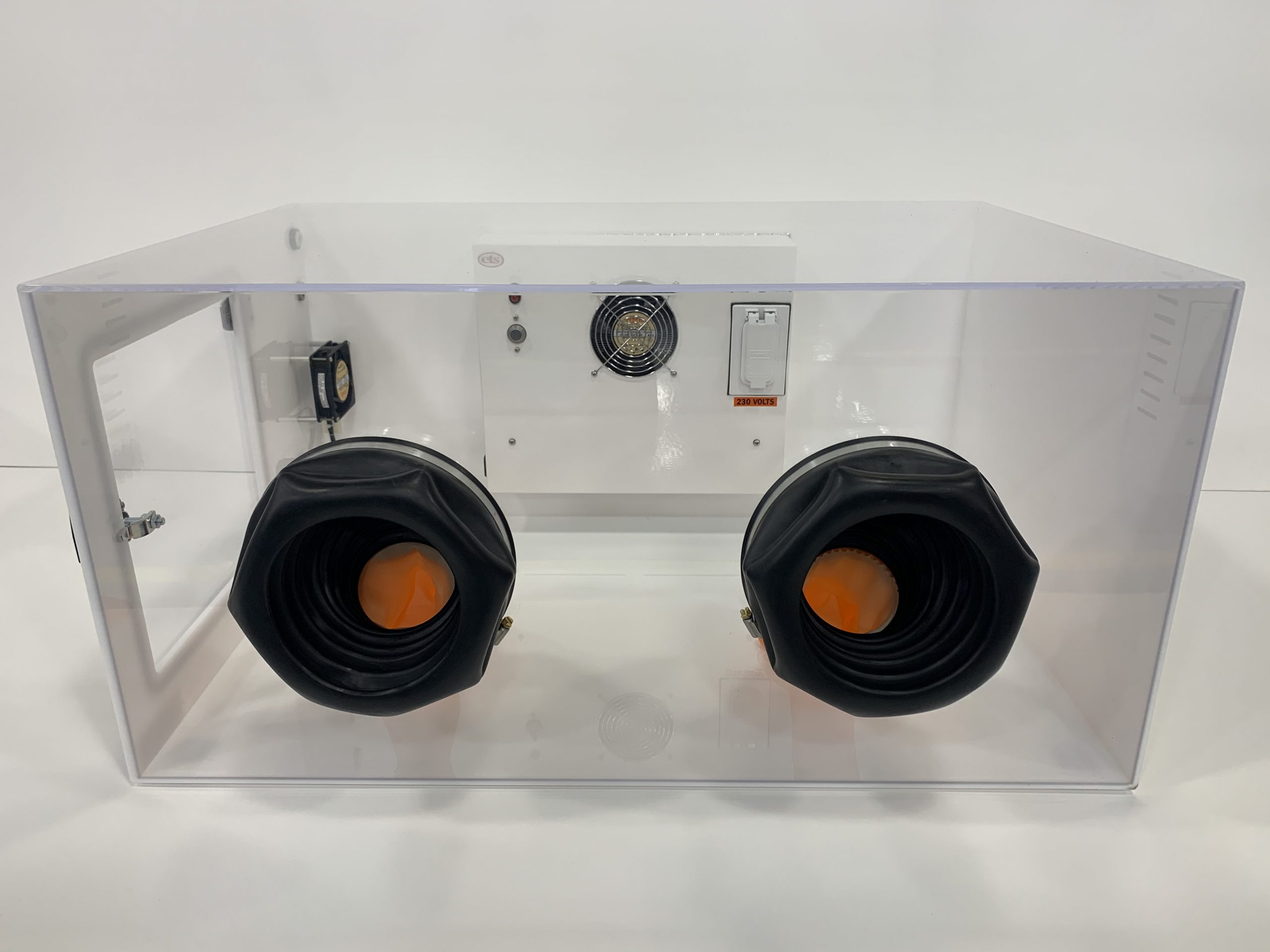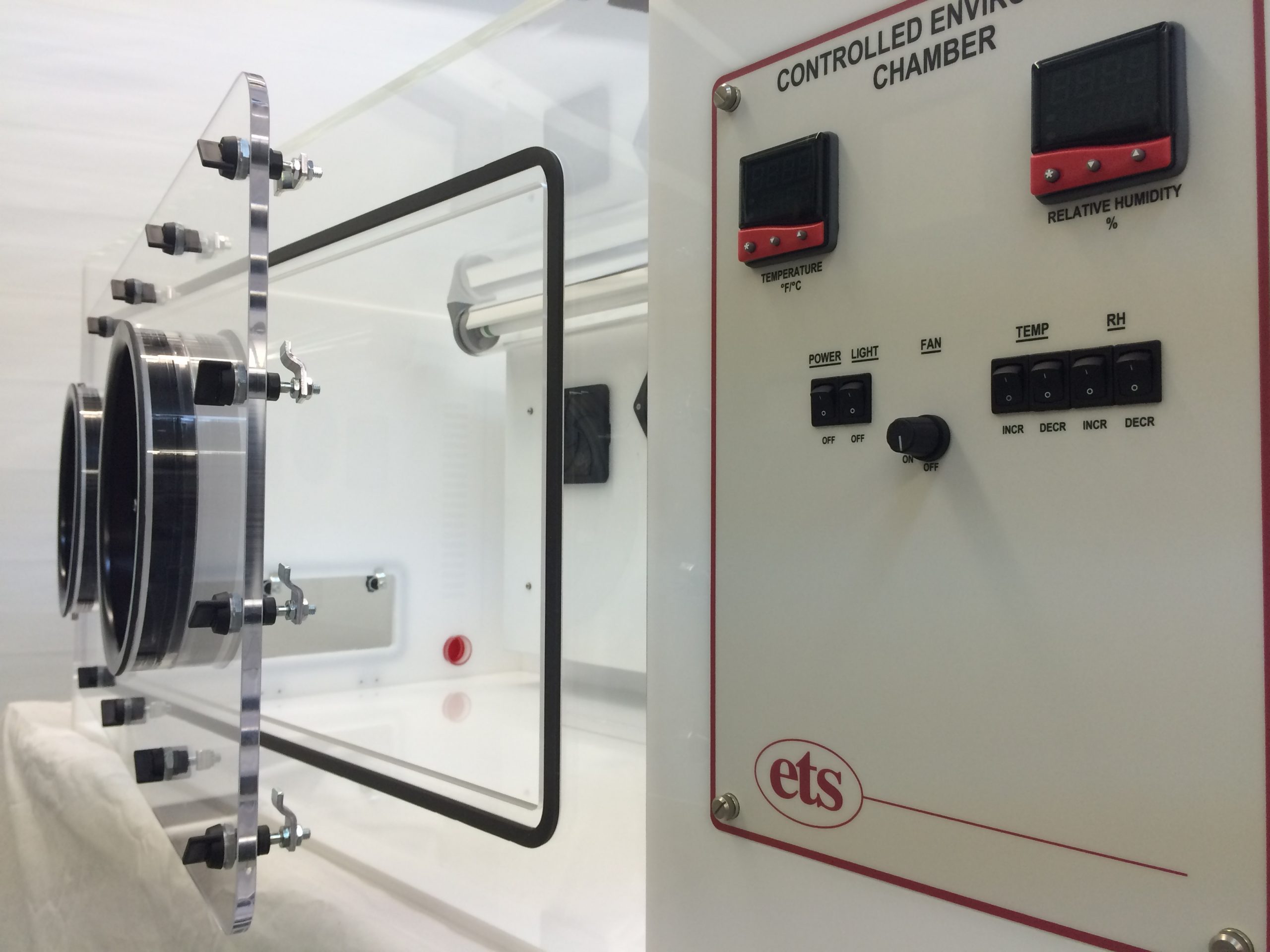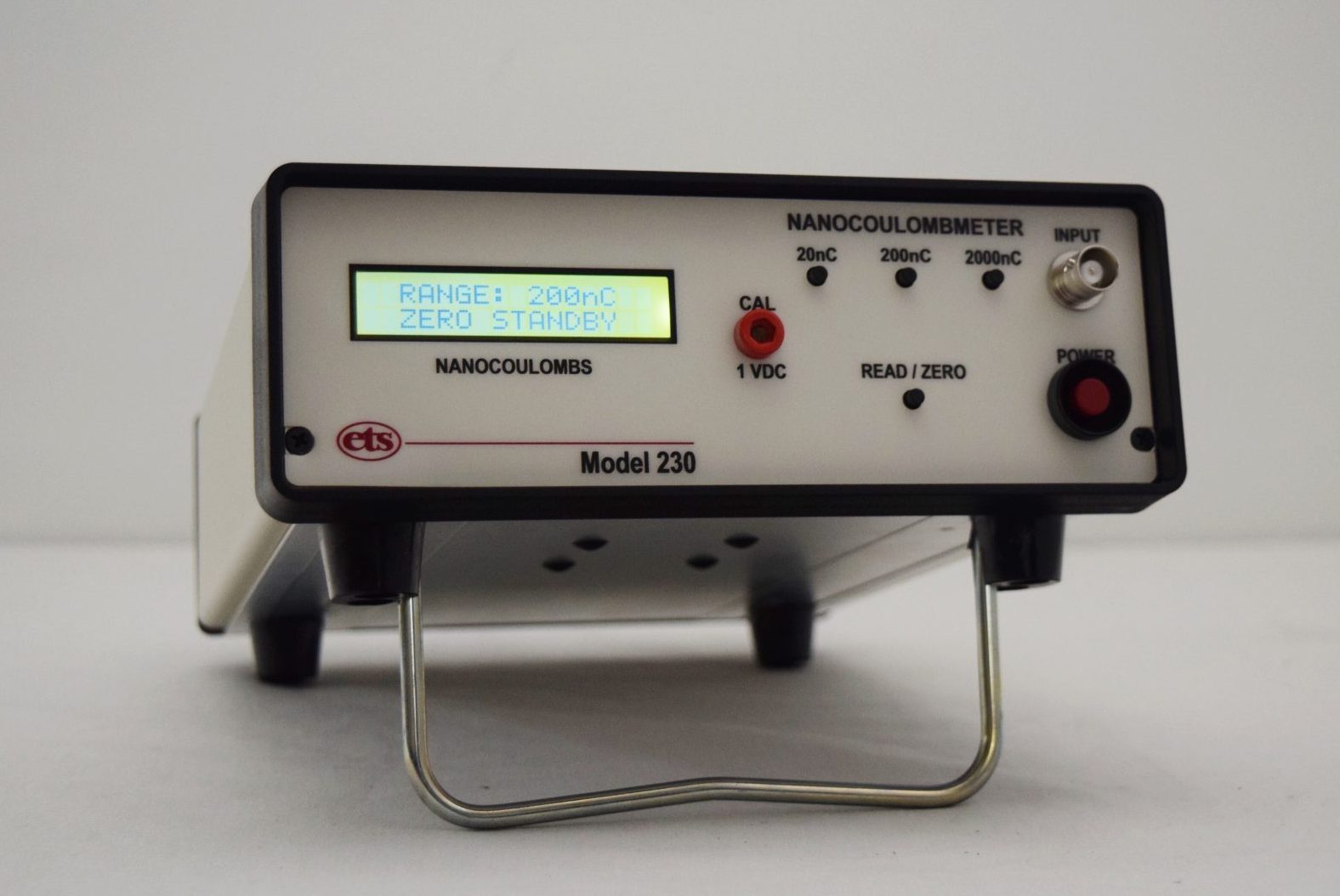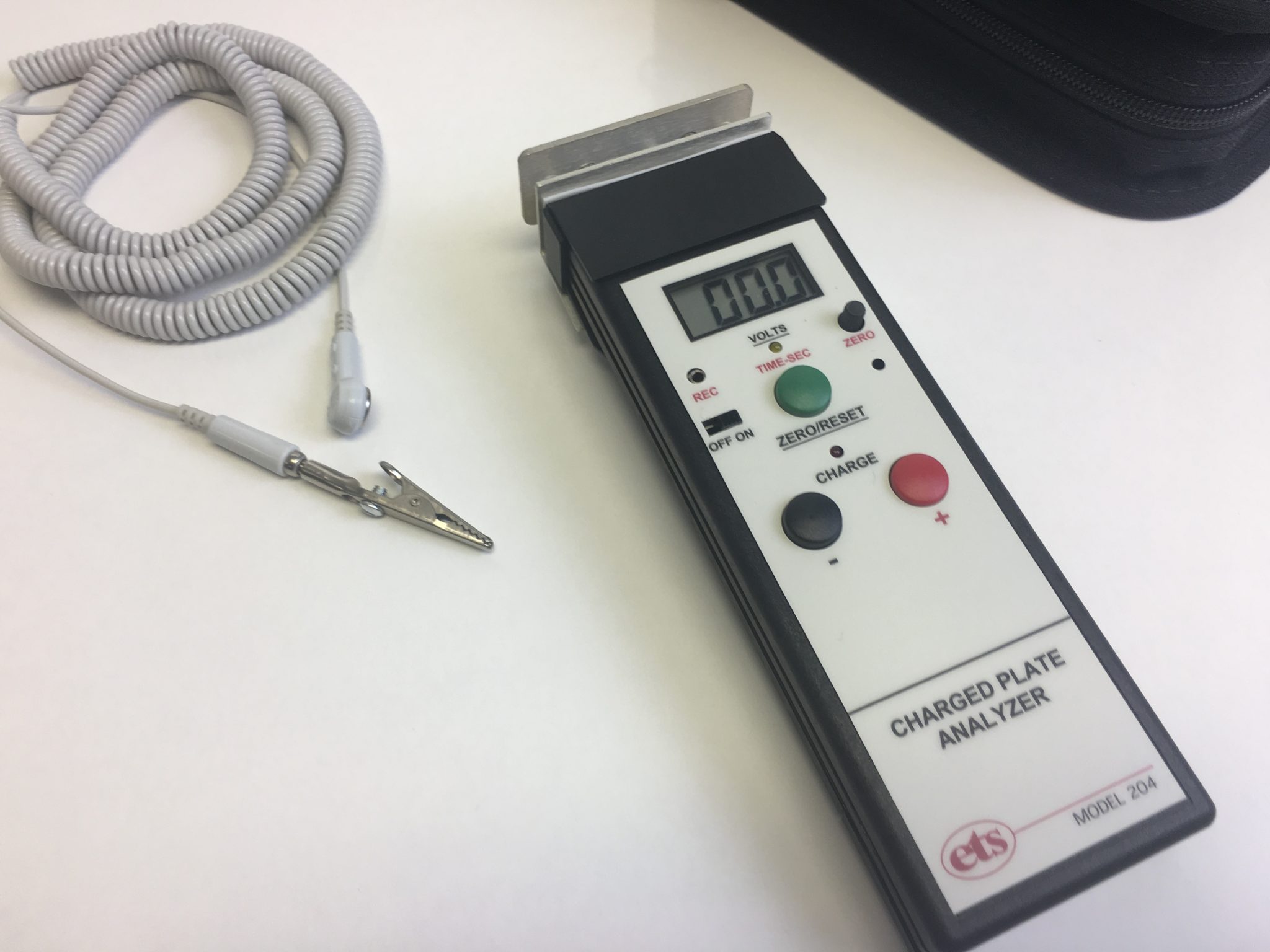M 4406 Static Decay Meter
Overview:
The ETS M 4406 Static Decay Meter, which replaced the previous generation Model 406, utilizes patented technology to meet the requirements for static charge dissipation and static decay rate testing as required by the Department of Defense (DOD) and various industry test standards.
A variety of electrode configurations are available which enable the static dissipative characteristics of film, fabric, foam, plastic, glass, paper, liners, formed parts (non-flat), nonwovens, bags, mats, cellulose, carriers, tote boxes, dispensing equipment, garments, tables, consumer products, seating, flooring and many other materials to be evaluated for electrostatic characterization.
The sample is contained in a special Faraday Cage, which includes a patented Electrostatic Sensor that enables the system to make a true electrostatic (non-contact) measurement of the charge on the sample. A fail-safe interlock system is employed which automatically discharges the test sample and/or prevents charging of the test sample when the Faraday Cage hood is raised. The safety interlock system also prevents the sample from being charged if the cage is not properly connected to the Control Unit.
The Model 4406 can be used for static decay analysis in R&D (Research & Development), QC (Quality Control) and other applications to test materials where static electricity can impact performance, production, manufacturing, handling, appearance, safety and personnel comfort.
Features:
- Measure the static decay rate of static dissipative material for ESD safe applications
- System automatically evaluates material properties prior to performing static decay testing to ensure valid results
- Faraday cage isolates the test sample and patented sensor technology ensures accurate measurement
- Fixturing and clamping flexibility allows analysis of various shapes, sizes and types of materials.
- System test module included verifies the system is operating correctly
- Automatic and manual test modes for maximum efficiency and testing flexibility
- Test data is stored in memory and available to download
Specifications:
- Accuracy: ±50ms @ 22° C and 12% RH ambient conditions and equipment set to a 10% cutoff with the STM-2 utilized as the standard.
- Resolution: 10ms for measurements ≥ 10ms; 1ms for measurements < 10ms.
Standards:
Meets the requirements of military and industry standards including:
- MIL-STD 3010C, Method 4046 (2013) – Static Decay Test
- IST 40.2 and NWSP 40.2.R0 (20) – Electrostatic Decay of Nonwoven Fabrics published by INDA and EDANA
- AAMI TIR11:2005 – Selection and use of protective apparel and surgical drapes in health care facilities (references IST 40.2)
- GB 19082—2009 – Technical Requirements For Single-Use Protective Clothing For Medical Use (references IST 40.2)
Related Standards: MIL-PRF 81705E, NFPA 77, ANSI-ESD S541, ISO 139, NFPA 99
Previous Standards: FTMS 101C, Method 4046.1, CECC 00015, NFPA 99 (2018), FED-STD-191A Method 5931 – Electrostatic Decay of Fabrics
Optional:
- Environmental Chamber (optional) – Model 4406 should be operated inside a controlled humidity environment to ensure compliance with standards.
